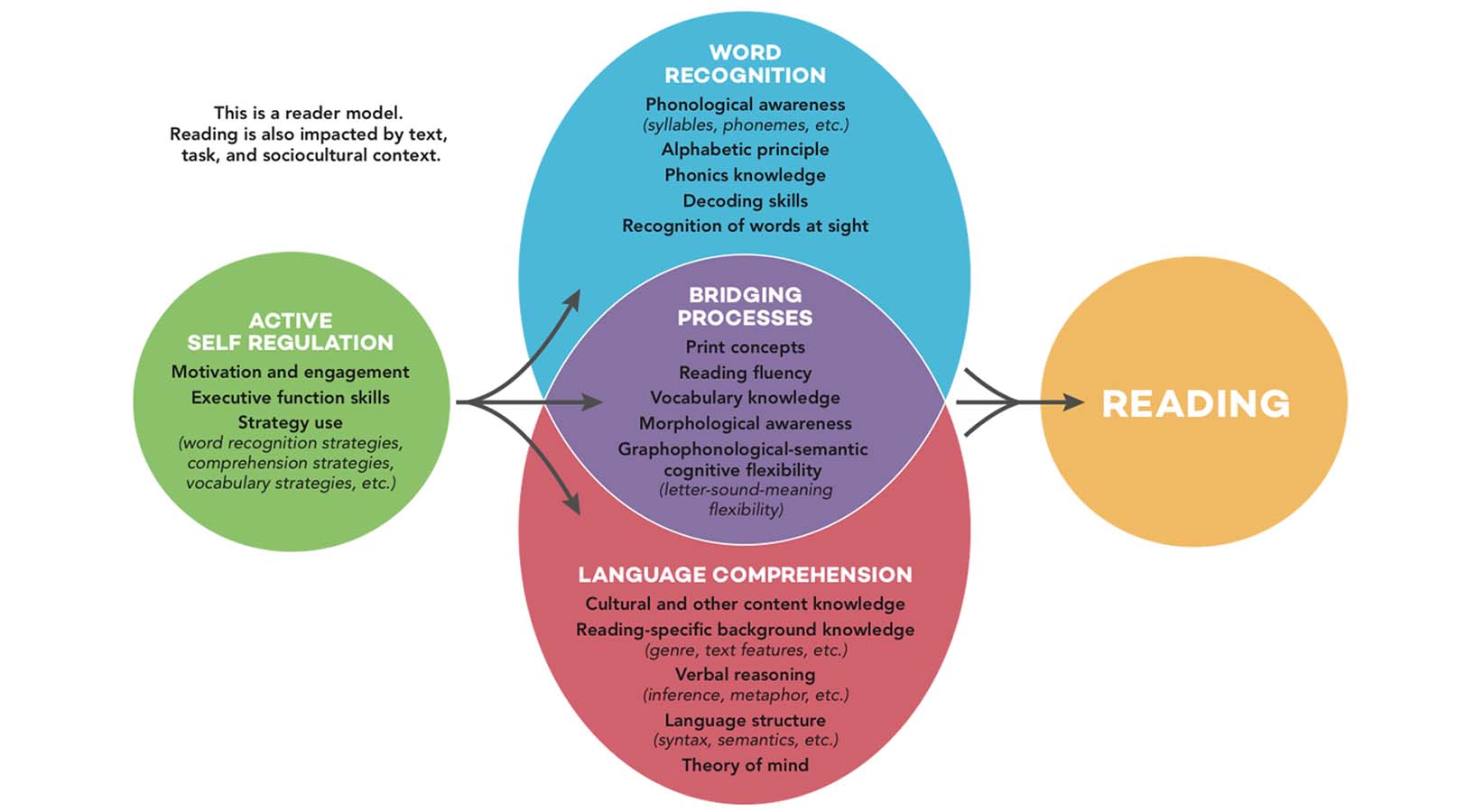
The Active View of Reading
In the ever-evolving landscape of literacy instruction, educators find themselves navigating through an array of models and methodologies, each claiming its stake in explaining how we learn to read and how to foster effective reading skills. One model that has recently gained attention is the Active View of Reading, an approach built off the Simple View of Reading and other similar models. Below we provide literacy practitioners with a basic introduction to the Active View of Reading.
The Active View of Reading underscores the dynamic interplay of various cognitive processes in reading acquisition. Departing from traditional paradigms that narrowly focus on isolated skills, this model encourages educators to embrace a more holistic perspective. It recognizes the intricate connections and bridging processes between recognition and comprehension, emphasizing the importance of engaging learners actively in the reading process.

In contrast, the popular Simple View of Reading posits that reading comprehension is the product of two distinct components: decoding and linguistic comprehension. While it provides a clear framework for understanding the basic elements involved, it may oversimplify the complexity of reading as a cognitive activity.
The Active View of Reading challenges this simplicity by acknowledging the nuanced interactions between decoding and comprehension. It recognizes that proficient readers not only decode accurately but also actively engage with the text, drawing on their language proficiency to comprehend meaning.
This approach examines new research, offering insights that contribute to a comprehensive understanding of effective literacy instruction. Practical applications of the Active View of Reading bridge the gap between theory and classroom implementation. Kelly Cartwright and Leah Mermelstein offer seven ways to integrate the model into teaching practice. Here we highlight a selection:
- Use it to guide professional conversation. The model grounds conversations about reading and reminds us to keep the big picture of comprehension in mind, without neglecting any components.
- Use it to examine/reflect upon your teaching and assessing. Reflect upon the question: How do I shift my teaching so that I am not only instructing and assessing the parts of reading separately but also instructing and assessing how students do when trying to use more than one part at a time? Are there areas of the model you are strong in? Areas you may be overemphasizing? Areas to augment? Use the graphic to ensure that all the pieces are brought into the classroom.
- Use it to augment teaching and learning related to Bridging Processes. Many skills overlap and influence one another during reading. Skilled readers are able to flexibly shift their attention back and forth between decoding and meaning, but for those readers who have trouble shifting, that flexibility can be taught. The purple color in the Active View diagram reminds us that these bridging processes help readers coordinate word recognition (which is blue in the Active View diagram) and meaning (which is red).
- Use it as an assessment shortcut for readers who struggle. The model encourages us to look across all the collections of skills and appreciate that all of these components must be working in concert. The question then becomes, can the learner coordinate the processes while reading? Posing this question helps us look through sharper lenses, to see the learner’s performance in all of these areas.
Though it requires more stringent testing, the Active View of Reading model can help equip educators to meet evolving learner needs. Ultimately, it stands as a powerful conceptual tool for cultivating reading success.
To learn more about the model, check out the resources below.
Resources
Related Blog Posts
Burnaby’s Award-Winning LINC Program
We are pleased to welcome Linda Peteherych as our guest blogger. Linda is a LINC Literacy instructor and the Literacy Lead for Burnaby School District’s LINC Program. Today she shares …
Teacher Self-Care Tips
Self-care is particularly important for teachers this year. It’s not always easy, but here are some tips. For more ideas, read Educator Resilience and Trauma-Informed Self-Care Self-Assessment and Planning …
New Streaming Videos from the Library
A Decoda Literacy Library volunteer has successfully converted two DVDs to improve accessibility.
